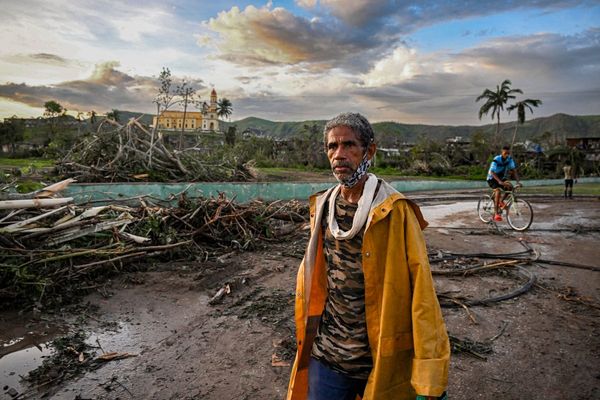
The full and devastating power of tsunamis has been recreated in lab for the first time, revealing valuable secrets about the little-understood waves. The work will lead to vital improvements to sea defences, coastal buildings and evacuation plans, ultimately saving lives.
Five major tsunamis have struck coasts around the world since 2004, killing 300,000 people, and the risks are rising as coastal cities expand. But the terrible violence of the giant waves means any scientific instruments present are almost always destroyed. The result is little knowledge of the huge forces with which tsunamis hit coasts.
Now researchers have created the world’s most realistic tsunami simulator at the HR Wallingford research centre in Oxfordshire. The 70m-long tank can, for the first time, replicate the shape and long duration of the tsunamis that wrought havoc around the Indian Ocean in 2004 and smashed into Japan in 2011.
Sneak peak @EPICentreUCL #tsunami research for media @guardianscience @ncedigital @BBCOxford at @hrwallingford pic.twitter.com/KUlC94UobK
— David McGovern (@DavidMcG84) September 7, 2016
The simulator is also the first to look at how clusters of buildings affect the destruction caused by a tsunami, by channelling the flowing water. “Tsunamis can be exceptionally destructive when they hit buildings, yet we really don’t know a great deal about how the massive horizontal forces they generate cause damage,” said Prof Tiziana Rossetto, from University College London (UCL), who is leading the research. “The challenge has been to build a testing facility where we can accurately model how the forces change or are magnified by the way buildings are clustered together in coastal towns and cities.”
“Our research will have far-reaching implications for both building and urban design in areas at risk of tsunamis and could help mitigate some of the most devastating risks to human lives,” she said. One application will be making better designs for vertical evacuation structures, tall buildings used as refuges in flat coastal areas.
The new tsunami simulator is built at 1:50 scale and is 4m wide. In the real world, underwater earthquakes trigger tsunamis, but in the simulator a pump at one end of the tank is used to raise up 70,000 litres of water. Then an air valve is used to let the water flood back into the tank, setting off the tsunami.
Crucially, the initial lifting of the water allows, for the first time, the creation of a wave that starts with a trough – the type of tsunami that hit Japan and Thailand. In the real world, this trough manifests as the water on the beach rushing out to sea, before a huge crest races back on to land.
“We are the only facility in the world that can generate trough-led waves,” said Rossetto. She visited sites in Sri Lanka and Thailand after the 2004 tsunami: “In some places the buildings completely failed, but in others they stayed standing. However, there was a total lack of understanding of the forces involved.”

The second vital feature of the new simulator is the air valve, which allows the wave to be controlled and creates very long duration waves like those seen in the real world. In Japan, the wave continuously poured water on to the land for 28 minutes, while in Thailand the wave lasted for 20 minutes. Earlier simulators, using paddles or dropped concrete blocks, could only produce short waves and did not replicate the punishing duration of the real tsunamis.
The researchers also looked at what happens when sea defences break down after being hit by a tsunami. “However big a wall is, you have to consider what happens when it fails,” said Prof William Allsop, technical director at HR Wallingford.
The researchers suspect that very high sea walls could actually make the impact of a tsunami worse by effectively creating a dam, against which water builds up, before breaking and releasing an even more violent torrent.
“You can see [in the tank] the carnage that occurs when the wall fails,” said Dr David McGovern, part of the UCL team. “We are looking to give engineers who design buildings, defences, nuclear power stations, an idea of what the forces are for a tsunami. We also want to use the data to improve evacuation procedures.”
Early results have already shown that in many cases tsunamis can crash further inland than previous estimates suggested and more experiments are still being conducted. “Ultimately, the goal is to protect life and property,” said McGovern.







